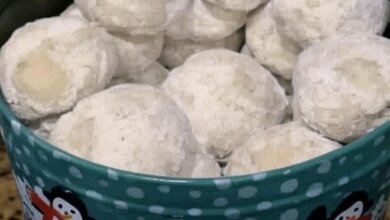Strawberries Will Be 10 Times More If Fed With This in the Spring

Strawberries Will Be 10 Times More If Fed With This in the Spring
Spring is a critical time for strawberry plants. As they awaken from winter dormancy, they begin to develop new roots, leaves, and—soon enough—blossoms. What happens in early spring largely determines how many strawberries your plants will produce throughout the season. If you want to significantly boost your strawberry yield, one simple step can make all the difference: feeding them the right nutrients at the right time.
There is a powerful, natural spring fertilizer that can dramatically increase both the quantity and quality of your strawberries. It’s affordable, easy to make at home, and delivers essential nutrients just when the plants need them most. This spring feeding method can lead to a strawberry harvest that’s up to 10 times more abundant than usual.
Why Spring Feeding Is So Important for Strawberries
Strawberries are heavy feeders. To produce lots of sweet, juicy berries, they require a consistent supply of nutrients—especially as they start to develop flower buds and fruit. The right fertilizer encourages strong root systems, healthy leaves, and continuous blooming.
Without enough nutrients in early spring, strawberry plants can become weak, with poor flower development and low fruit set. That’s why timing matters. Feed them early in the season, just as they start to grow, and you’ll give them a powerful head start.
A Powerful Homemade Fertilizer That Strawberries Love
One of the most effective and easy-to-make fertilizers for strawberries involves just a few simple ingredients, most of which can be found in the kitchen or garden shed. This natural recipe gives your plants a rich boost of nitrogen, potassium, phosphorus, and other trace elements needed for strong fruiting.
Here’s what you need:
Ingredients:
Banana peel – rich in potassium and phosphorus, two key nutrients for flower and fruit development.
Wood ash – a natural source of potassium and calcium, which improves soil pH and strengthens plant cells.
Water – to extract nutrients and make them available to the plants.
Optional: crushed eggshells – a great source of calcium, which helps prevent diseases like blossom-end rot.
How to Make the Fertilizer
Chop the banana peel into small pieces to help it break down faster.
Add 1–2 tablespoons of wood ash.
If using, crush 1–2 eggshells into fine bits and add them to the mix.
Place everything in a container and add about 1 liter (4 cups) of warm water.
Let the mixture sit for 24–48 hours to allow nutrients to leach into the water.
After soaking, strain the liquid and use it immediately to water your strawberry plants at the base, avoiding the leaves. This ensures the roots absorb the nutrients quickly and efficiently.
How and When to Apply
Apply this fertilizer as soon as your strawberry plants start to show new growth in the spring. This typically happens when temperatures consistently stay above 10°C (50°F). You can repeat the feeding every 10–14 days during the early part of the season until flowering begins.
Be sure to:
Water your plants before feeding, especially if the soil is dry. This helps prevent root burn.
Apply in the early morning or late afternoon to avoid the heat of the day.
Avoid overfeeding. Too much fertilizer—especially nitrogen—can lead to lush leaves but few berries.
Other Tips to Maximize Your Strawberry Harvest
Mulch Your Plants: After feeding, apply a layer of straw or dry grass clippings around your strawberries. Mulch retains moisture, suppresses weeds, and keeps the fruit clean.
Prune Old Leaves: In early spring, remove dead or damaged leaves to promote air circulation and reduce the risk of disease.
Divide and Replant Crowded Plants: If your strawberry bed is older than three years, it may be overcrowded. Thin out the plants or transplant runners to give them more space to grow and produce.
Ensure Good Drainage: Strawberries don’t like “wet feet.” Make sure your soil drains well, or consider planting on raised beds.
Encourage Pollinators: Bees and other pollinators help strawberries produce more fruit. Plant flowers nearby to attract them to your garden.
Why This Works
The combination of banana peel, wood ash, and eggshells offers a perfect balance of the nutrients strawberries need in spring:
Potassium boosts flowering and helps fruit ripen properly.
Phosphorus supports root development and energy transfer in the plant.
Calcium strengthens plant cells and improves resistance to disease.
Trace minerals found in wood ash help improve overall plant health and soil quality.
Because these ingredients are organic and natural, they work gently and steadily—without harming your plants or the environment.
Conclusion
Spring feeding is one of the most effective things you can do to boost your strawberry harvest. By giving your plants a rich, natural fertilizer early in the season, you set them up for strong growth, continuous blooming, and abundant fruit production. This simple homemade mixture of banana peel, wood ash, and eggshells delivers everything your strawberries need to thrive.
If you want to see 10 times more strawberries this year, don’t wait—start feeding your plants now and enjoy a long, delicious harvest all season long.



